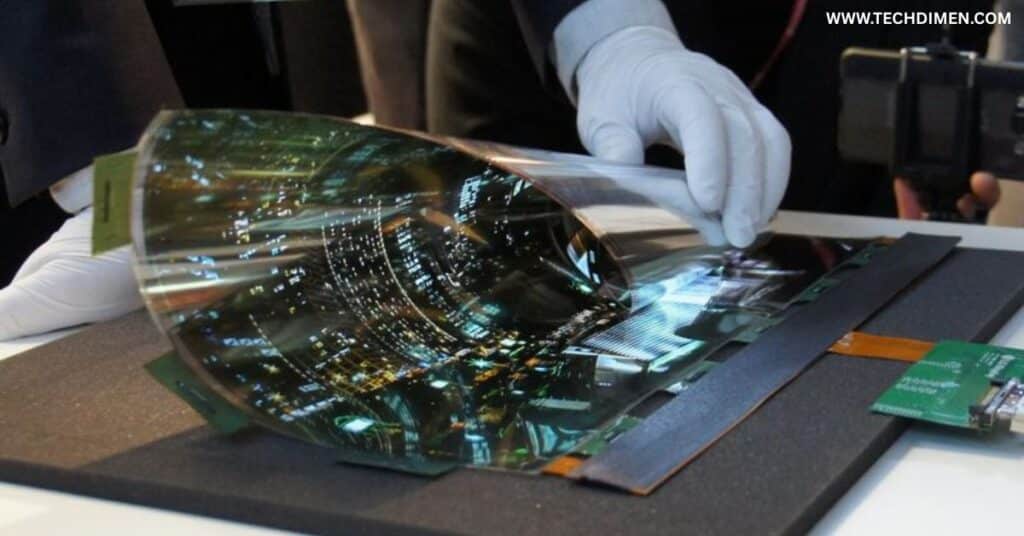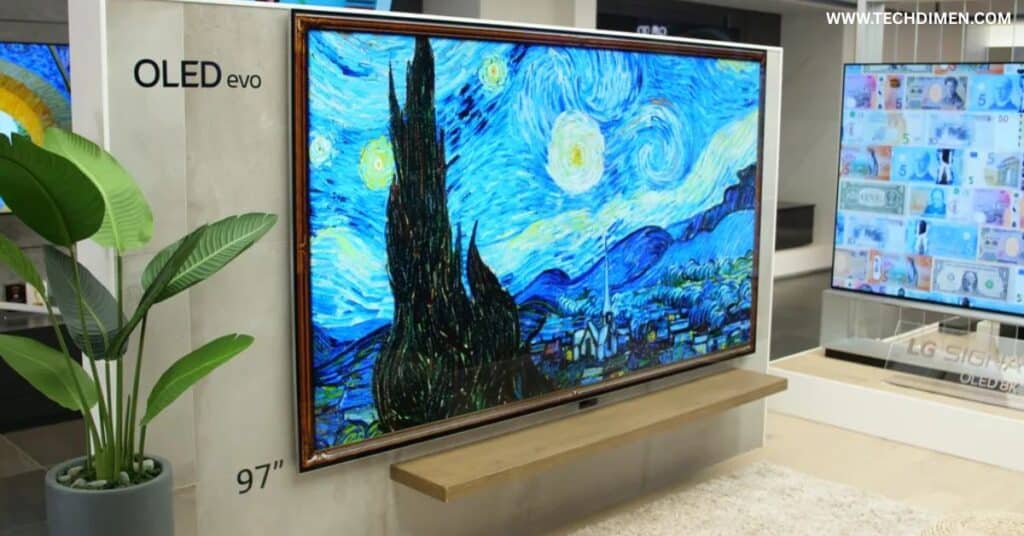If you’ve been shopping around for a high end TV lately, chances are you’ve seen the term OLED TV everywhere. It’s become the gold standard in premium television displays. But what does OLED actually mean And more importantly, why should you care.In simple terms, OLED stands for Organic Light Emitting Diode, and it refers to a type of display technology that radically improves picture quality by using self lit pixels. Unlike traditional TVs that use backlights, an OLED TV creates its own light at the pixel level, giving you rich contrast, perfect blacks, and an immersive visual experience that’s hard to match.
What OLED TV Actually Means
OLED technology is based on a series of organic compounds that emit light when electricity passes through them. The organic part refers to the carbon based materials used in the light emitting layers of the panel. These materials are incredibly efficient at producing light and allow the TV to generate color and brightness without the need for a backlight. This is what allows OLED panels to be extremely thin, flexible, and capable of producing some of the most stunning visuals in consumer electronics.
Each pixel in an OLED panel is a tiny light source this is what’s meant by self emissive pixels. These pixels can turn on and off individually, enabling precise control over brightness and color at a granular level. It’s this feature that makes OLED fundamentally different from older display technologies like LED and LCD.
what is oled mean in tv Works

OLED, you need to get a sense of the OLED layers that make up the panel. At the base, there’s the substrate, which provides structural support and is usually made of glass or flexible plastic. Above that sits the anode, which removes electrons from the system. Then you have the heart of the display: the organic layers specifically the emissive and conductive layers made from light emitting compounds. These are the materials that glow when electricity is applied. Finally, the cathode injects electrons to kickstart the whole light producing process.
Because each pixel operates independently, there’s no need for a separate light source. This pixel level light emission is what allows OLED screens to achieve complete pixel shutdown when showing black, resulting in what’s often called true black or infinite darkness. In practical terms, this means a night sky on an OLED screen actually looks like a real night sky deep, black, and free of any grayish glow.
Why Self Lit Pixels Make OLED Unique
When you hear the phrase self lit pixels, it’s referring to each individual pixel acting as its own independent light emitter. That’s the real magic behind OLED.
Because these pixels can turn off entirely, an OLED screen can achieve perfect black levels, something traditional LED TVs can’t do. This feature also contributes to an infinite contrast ratio, which means you get a much sharper distinction between dark and bright areas. The detail in shadows, the intensity of bright lights, and the subtle gradients of color all appear more lifelike and dramatic.
Another major benefit of self emissive pixels is speed. Since there’s no lag from a backlight, OLED displays respond almost instantaneously. Gamers and sports fans will notice this immediately with sharper motion and less blur during fast moving scenes. When you’re watching a soccer match or playing a first person shooter, this faster response translates into a clearer, more engaging viewing experience.
A Closer Look at OLED Technology’s Building Blocks

What sets OLED apart is its organic elements and how they are used to emit light directly. These organic materials are deposited in incredibly thin layers that are just a few nanometers thick. They sit between the anode and cathode, and when a current is passed through, these materials emit light this is known as electroluminescence.
The architecture of an OLED panel is simple yet sophisticated. There’s the substrate at the bottom, followed by the anode, the light emitting compounds, and then the cathode at the top. The entire stack forms what is known as the OLED matrix. This design is incredibly efficient and allows for razor thin screens that are both flexible and durable. It’s also the reason OLED TVs can be so beautifully designed think ultra slim bezels, curved displays, and even rollable panels.
How OLED Compares to LED and QLED
A lot of people assume that QLED is a type of OLED, but that’s not true. QLED is essentially a variant of LED, and it still uses a traditional backlight, whereas OLED doesn’t. The difference in how these technologies emit light leads to some stark contrasts in performance.
When it comes to black levels, OLED is in a league of its own. Traditional LED and even QLED panels rely on zones of backlighting. This creates a risk of light bleed, where bright areas spill into dark ones, reducing the overall contrast. OLED, on the other hand, offers infinite contrast by shutting down individual pixels entirely.
Color performance also favors OLED. Because the light is emitted directly by the pixel, colors appear more saturated and accurate. This translates into vibrant colors and a wider color gamut, which is crucial for HDR content. While QLED TVs can get brighter making them more suitable for extremely well-lit rooms OLEDs provide a more cinematic experience, particularly in darker environments.
OLED also wins on viewing angles. With LED and QLED panels, color and brightness degrade when you move away from the center. OLED maintains consistency from edge to edge, making it ideal for large rooms where people might be sitting at various angles.
The Visual Benefits in oled tv

The visual clarity of OLED is where it truly shines. The contrast ratio is unmatched, thanks to true black levels and pixel level control. You don’t just get deeper shadows you get shadows that reveal more detail, especially in dark scenes. That creates a level of visual depth and realism that LED and QLED just can’t achieve.
Color accuracy is another major strength. OLED TVs are calibrated to deliver highly precise hues. Whether you’re watching a nature documentary or a sci fi movie, you’ll notice that skin tones look natural, foliage appears rich, and lighting feels dynamic rather than flat. This kind of color performance is crucial for anyone who loves movie watching or wants a premium home entertainment setup.
Fast motion handling is also excellent. Because each pixel can switch states instantly, there’s almost no motion blur. This makes OLED an excellent choice for advanced gaming features, especially when paired with HDMI 2.1, VRR (Variable Refresh Rate), and low input lag technologies.
Design Flexibility and Innovation
Another advantage of OLED is its versatility in design. Since there’s no need for a backlight, OLED screens can be made thinner, lighter, and more flexible. This has led to some of the most innovative TV designs on the market today.
LG, for example, has released rollable OLED TVs that disappear into a stand when not in use. Sony has experimented with screen based speakers, where the OLED panel itself vibrates to produce sound. These kinds of innovations simply aren’t possible with older display technologies.
What to Consider Before Buying an OLED TV
Despite all these strengths, there are a few things you should know before investing in an OLED TV. One concern often mentioned is peak brightness. While OLEDs have improved dramatically in this area, they generally don’t reach the same brightness levels as high end QLED models. If you often watch TV in a very bright room, that’s something to consider.
Another frequently discussed topic is the burn in risk. This refers to the possibility of static images like logos or news tickers becoming permanently etched into the screen. Although the risk is real, it’s largely overblown. Most OLED TVs today come with built in features like pixel shifting, screen savers, and panel refresh cycles to mitigate this issue. Unless you’re watching static content for several hours every single day, image retention is unlikely to be a problem.
Burn In Protection and this World Usage

Modern OLEDs use intelligent software to protect the screen. For instance, LG’s OLED panels include logo dimming and automatic pixel refresh cycles that activate when the TV is turned off. Sony’s OLEDs use similar protections with slight variations in how they’re applied.
To avoid issues, just be mindful of how you use your TV. Mix up your content, avoid leaving it on the same channel all day, and take advantage of features like auto dimming and screen savers. Gamers might want to tweak their HUD settings occasionally to avoid static icons staying in one place too long.
Top OLED TV Brands and Models
When it comes to top brands, three names stand out in the OLED space: LG, Sony, and Samsung.
LG has been a pioneer in OLED development and offers the most comprehensive lineup. The LG C4 is a fan favorite for its balance of performance and price, while the G4 is designed for wall mounting and aesthetics. LG’s new M4 series even introduces wireless video transmission, eliminating the need for HDMI cables altogether.
Sony brings its own flair with the A95L, which uses a Quantum Dot OLED panel for enhanced brightness and color. The A80L offers a more affordable entry point without compromising on core performance.
Samsung entered the OLED market more recently but has already made waves with its S95D and S90D series. These use QD OLED technology, blending OLED’s contrast with the brightness of quantum dots.
Vizio offers a more budget-conscious option with the OLED H1, making OLED accessible without a premium price tag. Although it doesn’t match LG or Sony in processing power, it still delivers core OLED benefits at a more affordable level.
What Does OLED Mean in a TV?
| Feature | OLED TV | LED/LCD TV |
|---|---|---|
| Light Source | Self lit pixels | Backlit display |
| Black Levels | Perfect blacks | Dark gray tones |
| Contrast | Very high | Moderate |
| Viewing Angles | Wide and consistent | Limited, color shift occurs |
| Color Quality | Rich and accurate | Good, but less vibrant |
| Design | Ultra-thin | Bulkier |
| Response Time | Extremely fast | Slower |
| Burn in Risk | Possible with static images | None |
| Price | Expensive | More affordable |
Is OLED Worth the Price?

OLED TVs sit in the premium tier, but the price gap has narrowed significantly. A 55-inch OLED TV now starts around $1,000, while 65 inch models range from $1,500 to $2,200. Larger displays 77 inches and above can still cost upwards of $4,000, especially if you’re looking for the latest features.
So is it worth it? If you value picture quality, superior contrast, and an immersive viewing experience, then yes OLED is absolutely worth the investment. It’s especially recommended for home theaters, gaming setups, or anyone who appreciates the finer details in visual content.
FAQs
What does OLED mean in a TV?
OLED stands for Organic Light Emitting Diode. It refers to a type of screen technology where each individual pixel produces its own light. This eliminates the need for a backlight, allowing OLED TVs to display deeper blacks, higher contrast, and more accurate colors than traditional LED or LCD screens.
How is OLED different from LED and LCD TVs?
The biggest difference is that OLED screens are self emissive, meaning each pixel lights up independently. In contrast, LED and LCD TVs rely on a backlight that shines through a liquid crystal layer. This means OLED can completely turn off pixels for true blacks, while LED/LCD TVs always have some level of background light, which can affect contrast and black levels.
Is OLED better for picture quality?
Yes, OLED TVs are widely regarded as the best for overall picture quality. They offer extremely high contrast, perfect black levels, lifelike color accuracy, and very wide viewing angles. These strengths make OLED ideal for watching movies, streaming high-quality content, and enjoying visual rich entertainment in dark or controlled lighting environments.
Does OLED burn in still happen?
Burn in is a possibility with OLED, especially if a static image remains on the screen for long periods, such as a logo or a news ticker. However, modern OLED TVs include built in technologies like pixel shifting and screen refresh tools that significantly reduce the risk. For average use like movies, gaming, and casual TV viewing, burn in is very rare.
Is OLED good for gaming?
OLED TVs perform very well for gaming thanks to their fast response times, low input lag, and incredible image quality. Most recent models support HDMI 2.1 features like variable refresh rate and 4K at 120Hz, making them compatible with consoles like the PlayStation 5 and Xbox Series X. Gamers often prefer OLED for its responsiveness and visual clarity.
How long do OLED TVs last?
On average, OLED TVs can last between 30,000 and 50,000 hours before their brightness begins to degrade. This means even with several hours of daily use, an OLED TV will perform reliably for many years. Manufacturers continue to improve the longevity of OLED panels with each generation.
Are OLED TVs more expensive?
Yes, OLED TVs are typically priced higher than LED and QLED models because they use more advanced technology and deliver superior visual performance. That said, prices have dropped in recent years, and budget friendly OLED models are now available, making this technology more accessible to a wider audience.
What are some popular OLED TV brands?
LG is the leading manufacturer of OLED panels and produces many of the top rated OLED TVs. Sony, Panasonic, Philips, and Vizio also offer excellent OLED models, many of which use LG’s panels but add their own video processing technologies. LG and Sony remain the most widely recognized names in the OLED TV space.
Final Thoughts
To sum it up, an OLED TV isn’t just a screen it’s a gateway to a richer, more immersive world of entertainment. Powered by self lit pixels and advanced organic technology, OLED panels offer unmatched picture quality, design freedom, and innovation. The experience of watching a movie, playing a game, or simply streaming a favorite show becomes something more vibrant, more lifelike, and more compelling.
If you’re ready to invest in your home entertainment setup and want nothing but the best, then OLED deserves your attention. Whether you’re drawn to the deep blacks, the vibrant colors, or the cutting edge design, there’s no denying that OLED is the future of display technology.

Jhon AJS is a tech enthusiast and author at Tech Dimen, where he explores the latest trends in technology and TV dimensions. With a passion for simplifying complex topics, Jhon aims to make tech accessible and engaging for readers of all levels.







